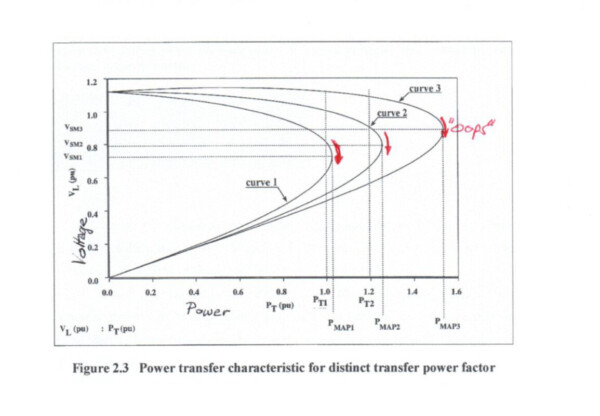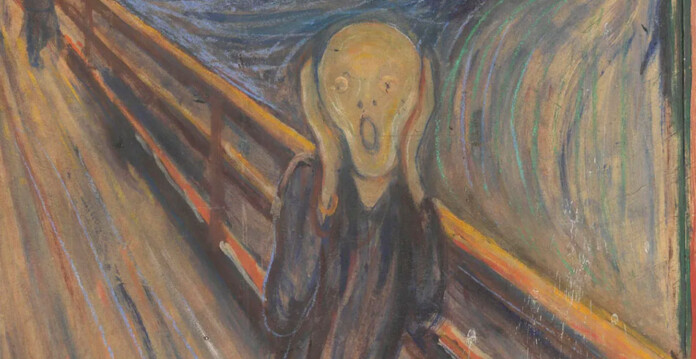By Phil Kreveld
A scanning of the national media on CO2 targets, the Labor Government’s acquiescence to debate of a National’s private members bill to drop the net zero target, the expansion of the Capacity Investment Scheme, the opposition of farmers to the VicGrid development (Sydenham in Melbourne’s western suburbs to Bulgana near Ararat), and the Australian Energy Market Operator’s quiet worrying about restarting distribution networks following blackout events—brings to mind Edvard Munch’s The Scream. The famous Norwegian artist, born in 1863, created an image of angst, of frustration, and incomprehension. About that time, Charles Proteus Steinmetz published his seminal work on alternating current electrical engineering, which is still completely relevant today.
Related article: Why Australia’s electricity grid needs marriage counselling
Munch’s now universal image of a lonely figure on a bridge is an appropriate paradigm for Australia’s renewable journey. Surely, it’s one calling out for screams of frustration at the disorganised and even chaotic manner in which we attempt to wrest the maximum advantage from wind and solar resources. The latest CSIRO GenCost report states renewable energy to be the lowest cost form of generation. No quibbles with the report but the boundaries surrounding the cost cannot take into account the haphazard grid development being practised and its cost to consumers. ‘Haphazard’ may seem overly exaggerated but it is to the point. Take as an example, the willful blindness to the increasing energy independence of the nation’s south eastern grid’s terminal stations. They are dynamic loads, providing little or no visibility to AEMO. They cause voltage control problems in transmission grids, and in the event of blackouts, they present enormous challenges to stable restart procedures.
Yet, the philosophy guiding ‘Rewiring the Nation’, by its very title, ignores the fact that over 90% of all generated electrical energy is consumed in distribution networks. The energy needs and dormant generation capacities of distribution networks fade with the attention given to vast national grid projects, giving rise to much heated and unenlightened debate. In essence, issues such as voltage stability, increasingly challenged by highly variable power flows because of the dynamic loads at terminal stations, is something left to the worrywarts labouring in the bowels of their engineering organisations—out of sight in the public square debates.
Apropos the Iberian Peninsula grid failure, causing the New South Wales Government to set up its own energy security apparatus, whatever finally emerges from Spanish government enquiries, voltage instability will have been one of the major factors. Let’s dwell for a moment on the most elementary exemplar of voltage stability, and then think of the implications of highly variable power flows occasioned by renewable energy sources. The formula below provides insight.

The symbol X refers to the impedance (to the flow of electrical power), without energy loss, of a transmission line—in practice unachievable. The symbol PL refers to the power flow delivered at the receiving end of the line, and VS is the sending end voltage. The trigonometric functions for angle quantities delta and phi can be explained as follows; delta representing the phase angle difference between the sending end voltage and the receiving end voltage, whose stability is highly desirable. The angle, phi, presents through ‘cos phi’, the power factor of the load at the receiving end of the transmission line. The formula for voltage (VL) at the receiving end of the transmission line is shown below. The other symbols and trigonometric functions are the same as already shown above.

Why all this maths? Only to focus attention that a transmission line is not an extension cord—and the longer the line the more ‘love and attention’ is demanded by it. As for the implications of this bit of analytical reflection, look at the graphs below, showing transmitted power versus voltage at the receiving end for three values of power factor. To make matters as clear as possible, the ‘oops!’ points are clearly indicated by red arrows. As is evident, more and more power can be delivered while the voltage (vertical axis) at the receiving end decreases marginally—but at the ‘oops’ point, the receiving voltage starts to collapse; nor can more power be transmitted. The transmission line has become unstable—along with everything else connected to the receiving end of the line.

So, where is the danger lying in wait as renewables replace synchronous generation? Afterall, Steinmetz, the grizzled electrical engineering genius of two centuries ago, would have done the above maths, and transmission lines then would—in theory—have been subject to the same voltage collapse possibilities. But no, in his day everyone consumed electricity in a very predictable, diurnal manner, as there were only a few large generators supplying very steady loads. We, on the other hand, have highly variable renewable generation, widely dispersed, and equally variable demand consumers generating their own energy requirements by way of rooftop solar. That leads to many potential ‘oops’ conditions, where sudden additional power demands, tip the national grid into voltage collapse.
AEMO is well aware of this but doesn’t want to frighten the punters. As can be seen from the graphs, receiving end voltage varies from high (no load) to zero under short circuit conditions. Already, the open circuit voltage at some transmission lines in the south eastern grid are sometimes close to unloaded, i.e., supplying very little energy to terminal stations. In long transmission lines, the receiving voltage can be higher than at the sending end (the Ferranti effect), causing massive investments in thyristor-controlled reactors to bring voltage to acceptable levels—or to ask battery owners to have their assets in discharged condition at the start of the day so as to insure energy flow.
Related article: Barnaby Joyce wants Australia to abandon net zero—but his claims don’t stack up
The Iberian grid collapse is at least in part attributable to the above-described set of conditions. Generators were required to provide voltage control on unloaded transmission lines, and in the process became unstable. We could concentrate just on that aspect but that would be too narrow a view of the engineering challenges associated with the renewable transition. In a nutshell, we are challenging the stability principles of the Russian mathematician Aleksandr Lyapunov—a contemporary of Steinmetz. In short, the Lyapunov criterion describes the conditions necessary of an electrical system to return to somewhere near its original stable state following a disturbance. As inverters, associated with solar and wind generation, replace legacy power stations and synthetic inertia replaces the physical inertia of synchronous generation, grid stability will be increasingly challenged—and unless a ‘whole of system’ design approach is taken, we can bet on tears of regret to follow.







